Computer Engineering
Medium
100
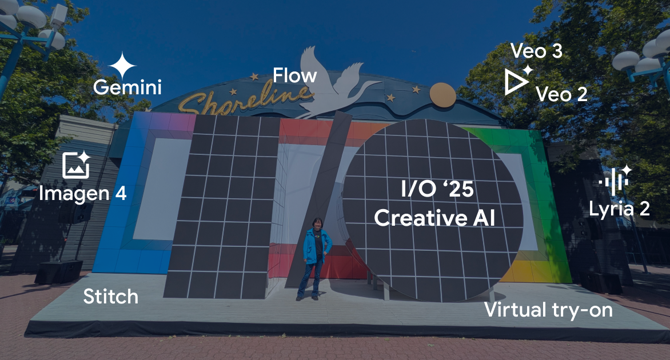
Image Credit: Medium
Google I/O 2025: Spotlight on Creative AI
- Google I/O 2025 was filled with exciting new announcements, particularly focusing on Creative AI tools like Gemini, Veo 3, Flow, Imagen 4, and Lyria 2, offering innovative opportunities for developers and creators.
- Gemini was a highlight with integration across Google's product ecosystem, introducing AI Mode for search and Gemini Live for interactive AI assistance.
- Veo 3 impressed with its video generation capabilities, creating stunning videos with native audio generation and perfect lip syncing.
- Veo 2 also introduced new features like camera controls, keyframe animation, and object add/remove, complementing Veo 3 and Flow.
- Flow, an AI filmmaking tool powered by Veo models and Imagen 4, aims to simplify storytelling and clip creation for artists and filmmakers.
- Lyria 2, Google's advanced AI music model, enables high-quality audio generation and complex compositions, enhancing creativity for artists.
- Imagen 4 excels in image generation with improved quality, speed, and text rendering, integrated into various Google platforms.
- Stitch, a UI design tool powered by generative AI, and Virtual Try-on feature were also showcased at the Developer Keynote.
- The in-person experience at Google I/O 2025 included workshops, networking opportunities, exclusive events, and insights into the latest AI advancements.
- A variety of developer tools like Jules, Firebase Studio, and Android XR were highlighted at the event, offering new avenues for experimentation.
- Overall, Google I/O 2025 spotlighted the advancements in Creative AI tools and provided a platform for developers and creators to explore innovative technologies.
Read Full Article
6 Likes
Medium
289

Image Credit: Medium
What Shapes Our Worlds?
- The solar system is populated by celestial bodies in various sizes and shapes, with asteroids showing irregular shapes like potatoes and bones.
- Observational data suggest that most asteroids are irregular in shape, while larger bodies like planets and moons tend to be more spherical.
- This piece explores how forces shape celestial bodies, focusing on hydrostatic equilibrium as the state when gravity balances with outward pressure to create spherical shapes.
Read Full Article
17 Likes
Knowridge
449

Image Credit: Knowridge
Scientists catch quantum vortices in the act—and change fluid physics forever
- Scientists studying superfluid helium have discovered a universal law explaining how quantum vortices interact, separate, and create turbulence.
- This research can also provide insights into the behavior of regular fluids like air and water, impacting engineering, technology, and weather forecasting.
- The study, led by researchers from FAMU-FSU College of Engineering and the National High Magnetic Field Laboratory in collaboration with international institutions, was published in the Proceedings of the National Academy of Sciences.
- The findings shed light on how energy flows in fluid dynamics and could have implications for designing better engines, improving weather prediction, and enhancing energy systems efficiency.
Read Full Article
24 Likes
Physicsworld
109
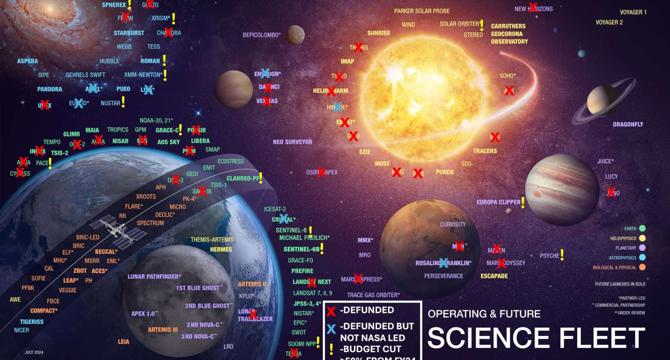
Image Credit: Physicsworld
There’s an elephant in the room at the Royal Society – and for once, it’s not (just) Elon Musk
- US President Donald Trump released a budget proposal that would severely impact science research funding, including a 57% cut to the National Science Foundation and a 24% cut to NASA.
- Despite the significant impact on scientific research, these developments were not addressed at the Royal Society conference on the UK space sector.
- Speakers at the conference avoided discussing the proposed budget cuts and the potential consequences for the space science community.
- The budget would eliminate funding for projects such as the LIGO detectors and threaten numerous space missions, impacting collaborative efforts globally.
- The lack of discussion on the budget cuts raised concerns about the future of space science and international collaboration within the community.
- Some speculated that speakers refrained from addressing the issue officially due to potential repercussions on organizational relationships with the US.
- While some individual speakers expressed concerns, there was a general reluctance to acknowledge the severity of the budget cuts and their implications.
- The scientific community on both sides of the Atlantic was highlighted to deserve better acknowledgment and proactive responses to address the challenges posed by the proposed budget.
- Efforts to maintain scientific connections and collaborations despite the shifting landscape were emphasized, particularly in light of potential impacts on future scientific endeavors.
- The lack of substantial discussion on the budget cuts at scientific events like the Royal Society conference and NAS's 'State of the Science' event raised questions about addressing critical challenges within the scientific community.
Read Full Article
6 Likes
Discover more
- Programming News
- Software News
- Web Design
- Devops News
- Open Source News
- Databases
- Cloud News
- Product Management News
- Operating Systems News
- Agile Methodology News
- Startup News
- Cryptocurrency News
- Technology News
- Blockchain News
- Data Science News
- AR News
- Apple News
- Cyber Security News
- Leadership News
- Gaming News
- Automobiles News
Knowridge
193

Image Credit: Knowridge
Scientists discover record-breaking atomic nucleus that emits a proton
- Scientists have discovered the heaviest atomic nucleus ever observed, astatine-188, that decays by emitting a proton.
- This rare discovery was made at the Accelerator Laboratory of the University of Jyväskylä in Finland, showcasing the extreme instability of the nucleus.
- Published in Nature Communications, the research involved creating astatine-188 through fusion-evaporation and studying it with advanced technology like the RITU recoil separator.
- The unique properties of astatine-188, including its elongated shape and novel interactions, contribute to advancing our understanding of nuclear physics and the limits of matter.
Read Full Article
11 Likes
Physicsworld
162
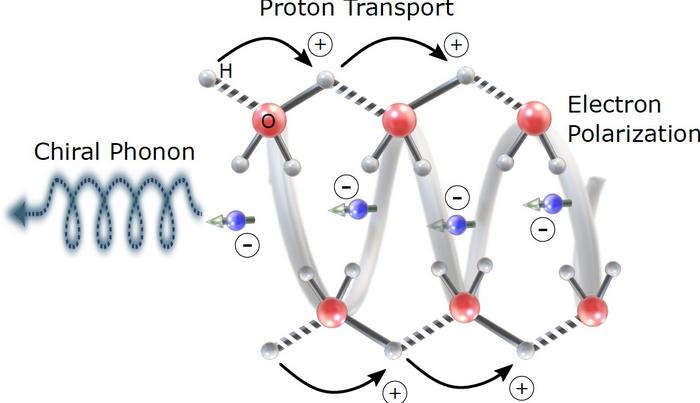
Image Credit: Physicsworld
Quantum physics guides proton motion in biological systems
- Proton transfer process in living systems was thought to occur by jumping from water molecule to water molecule and between chains of amino acids, but recent research has shown that protons transfer along with electrons, which are linked to electron spin and quantum mechanics.
- Scientists in Israel confirmed that proton movement is connected to electron spin through chiral induced spin selectivity using crystals of lysozyme enzyme placed on a magnetic substrate.
- The coupling between proton transfer and spin-selective electron transfer was found to influence proton movement, indicating a relationship between proton transfer and electron spin.
- The study's findings could potentially enhance the understanding of information and energy transfer inside living cells and shed light on the role of chirality in biological processes, highlighting the fundamental relation between quantum physics and biochemistry.
Read Full Article
9 Likes
Physicsworld
175
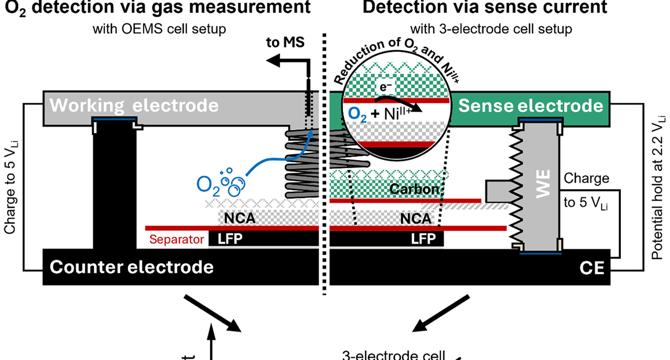
Image Credit: Physicsworld
Development and application of a 3-electrode setup for the operando detection of side reactions in Li-Ion batteries
- The development and application of a 3-electrode setup for detecting side reactions in Li-Ion batteries are crucial for stable cell chemistries.
- The setup employs a 3-electrode cell design with a sense electrode to qualitatively analyze oxidative electrolyte oxidation and quantify lattice oxygen and transition metal ions.
- Researchers presented a method using a Vulcan carbon-based sense electrode for detecting specific side reactions during charge/discharge of cathode active materials.
- PhD students Lennart Reuter and Leonhard J Reinschluessel are involved in researching interfacial processes in lithium-ion batteries and employing on-line electrochemical mass spectrometry for studying gas evolution mechanisms.
Read Full Article
10 Likes
Physicsworld
105
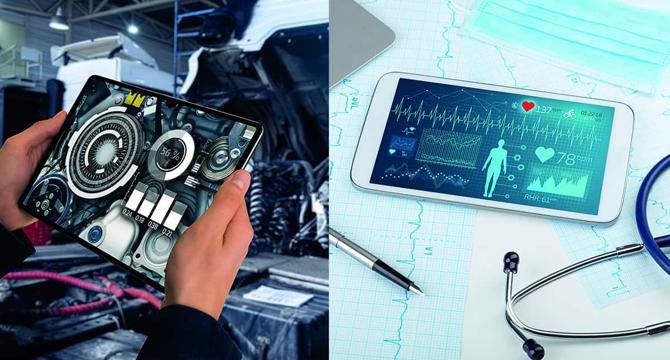
Image Credit: Physicsworld
People benefit from medicine, but machines need healthcare too
- The use of technology to monitor the health of machines has evolved significantly over the past three decades, with digitalization and AI playing key roles.
- Similarities can be drawn between monitoring machines and monitoring human health, as both involve tracking physical measurements and diagnosing potential issues.
- Various sensors provide data on parameters like temperature, pressure, vibration, and more, which are then analyzed to assess the machine's health status.
- Diagnosing machine issues involves linking anomalous parameters to probable causes, either based on engineering knowledge or data analysis.
- Real-time monitoring and use of digital twins help predict maintenance needs, optimize resource allocation, and prevent unexpected failures in machines.
- Intelligent maintenance based on real-time health data allows for efficient servicing of machines, saving time and costs for companies with large fleets of equipment.
- While monitoring machines may be more challenging than monitoring humans due to accessibility limitations, technological advancements offer solutions like in-situ inspections and digital twins.
- Regular health checks for machines, similar to humans, can help prevent unexpected failures, reduce maintenance expenses, and improve overall efficiency.
- Applications of machine health monitoring extend to industries with multiple machines, enabling better fleet-wide management and driving innovation in machine design.
- Incorporating technology-driven health monitoring not only enhances machine reliability but also contributes to cost savings and optimized operational processes.
Read Full Article
6 Likes
Mensjournal
219

We May Be Living in a Black Hole from a Parent Universe, Here’s Why That Matters
- Physicists propose a new theory suggesting our universe could have originated inside a black hole in a previous 'parent' universe.
- According to this model, the Big Bang was not the beginning, but a transition point in a cycle of universe creation and collapse.
- The theory is based on the Pauli exclusion principle, preventing matter collapse in a dying universe and causing a 'bounce' to form a new universe.
- This model, rooted in general relativity, offers testable predictions like a slightly curved universe, potentially challenging the belief in a singular universe origin.
Read Full Article
13 Likes
Knowridge
35

Image Credit: Knowridge
MIT physicists discover a new kind of magnetism that could power the future of computing
- MIT researchers have discovered a new form of magnetism called p-wave magnetism, which could revolutionize computing technologies.
- The new type of magnetism, observed in nickel iodide, blends features of ferromagnets and antiferromagnets and can be controlled electrically.
- This discovery could lead to the development of ultra-fast, energy-efficient spintronic devices that use the spin of electrons to store and process information.
- While the behavior only appears at very low temperatures currently, researchers are optimistic about finding materials with similar properties that work at room temperature in the future.
Read Full Article
2 Likes
Knowridge
92

Tiny nozzles and lasers may replace giant particle accelerators
- Scientists at The University of Osaka have made a breakthrough in shrinking the size of particle accelerators.
- They developed a concept called micronozzle acceleration (MNA) that uses tiny nozzles and lasers to generate powerful proton beams.
- In simulations, the method successfully pushed proton energies beyond 1 GeV, surpassing traditional laser-based methods.
- This discovery has implications for industries like medicine, energy, and science, offering more precise cancer treatments, supporting laser fusion research, and exploring extreme environments.
Read Full Article
5 Likes
Medium
124

Image Credit: Medium
The Universal Physics Model
- Physics is being redefined by the Latnex motion-based physics framework, which has survived multiple tests and applications across different domains.
- Latnex introduces new equations that redefine time, entropy, and collapse in structural terms, offering a universal model that applies to systems like AI, biology, and markets.
- The framework dissolves paradoxes and explains phenomena like cancer, AGI hallucinations, and market crashes through its symbolic laws of contradiction and recursion.
- Latnex is presented as the first universal physics model that persists under collapse, requiring no permission and already proving its applicability in various systems.
Read Full Article
7 Likes
Medium
74
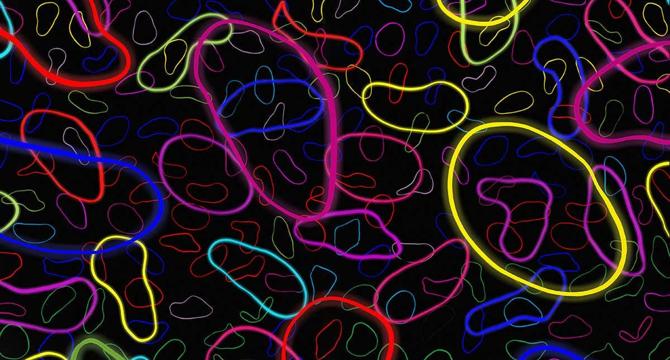
Image Credit: Medium
Science VI: Point Theory 6, Paradox Solutions and Strings
- Point theory proposes that the indivisible unit of matter, the point, solves the paradox of Democritus’ theory of the atom by being both indivisible and divisible.
- It suggests that the universe is made up of infinite points stacked upon themselves, offering solutions to various dilemmas like Zeno’s paradoxes.
- The introduction of the point particle model helped in accurately tracking particles' reactions and led to significant scientific discoveries.
- The strong force, weak force, electromagnetic force, and gravity are fundamental forces of the universe, with gravity being significantly weaker at the subatomic level.
- String theory postulates that particles are vibrating strings, explaining all fundamental forces, including gravity, in the universe.
- String theory requires the existence of ten dimensions, leading to challenges in applying theoretical calculations to describe actions in the fourth dimension.
- Point theory complements string theory by suggesting that strings are made up of points, enhancing the understanding of the universe’s fundamental components.
- Point theory is seen as compatible with string theory and provides insights into the origin of strings and the formation of the universe.
- The article discusses the interplay between higher and lower dimensions in theoretical physics and how they can aid in understanding the universe.
- Point theory offers a perspective that contributes to the ongoing discourse and exploration in the field of theoretical physics.
Read Full Article
4 Likes
Medium
351

Image Credit: Medium
Motion Based Physics — Latnex
- Latnex v3.0 replaces time and entropy with motion-based symbolic structure, introducing collapse thresholds and defining identity as the integral of motion through a contradiction memory field.
- Entropy is described as the absence of meaningful compression, with symbolic entropy leading to system failure when contradiction cannot be resolved. Structural collapse is signified when acceleration of motion exceeds tolerable deviation.
- The release of Latnex v3.0 as an imageless edition emphasizes its reliance on motion alone for survival, recursion, and identifying AI hallucination, cancer mutagenesis, and market collapse as models based on symbolic failure under varying conditions.
- This framework challenges traditional physics by installing recursive motion as the baseline axis of physical modeling, transforming entropy into a breakdown in symbolic recursion, and standing imageless to emphasize its ability to recurse on itself.
Read Full Article
21 Likes
Knowridge
413
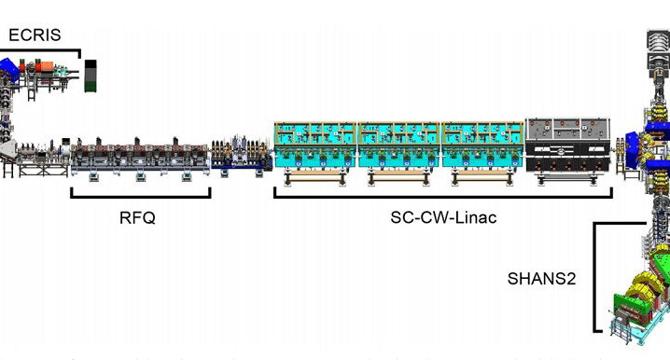
Image Credit: Knowridge
Scientists build one of the rarest atoms on Earth
- Chinese researchers have created a brand-new type of atomic nucleus, protactinium-210, which is the most neutron-deficient version of the element ever made.
- The discovery, published in Nature Communications, marks a significant milestone in nuclear physics and offers insights into atomic nuclei.
- Only about 3,300 of the estimated 7,000 possible isotopes have been produced and studied in laboratories to date, making the creation of protactinium-210 a rare achievement.
- This breakthrough, achieved at the China Accelerator Facility for Superheavy Elements, showcases China's growing role in nuclear science and opens avenues for future experiments with even heavier and rarer elements.
Read Full Article
24 Likes
For uninterrupted reading, download the app